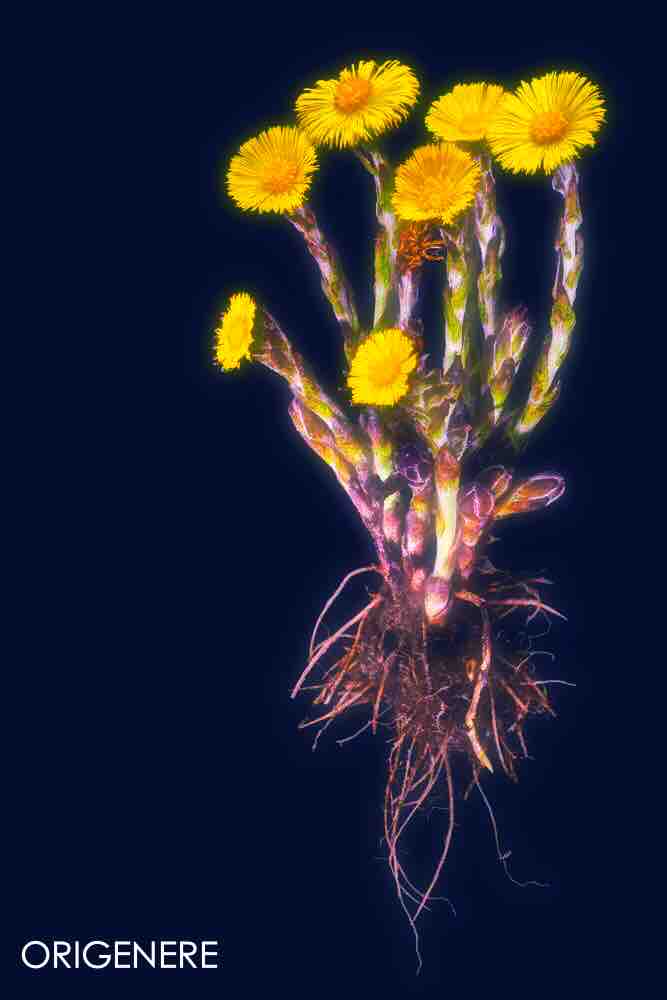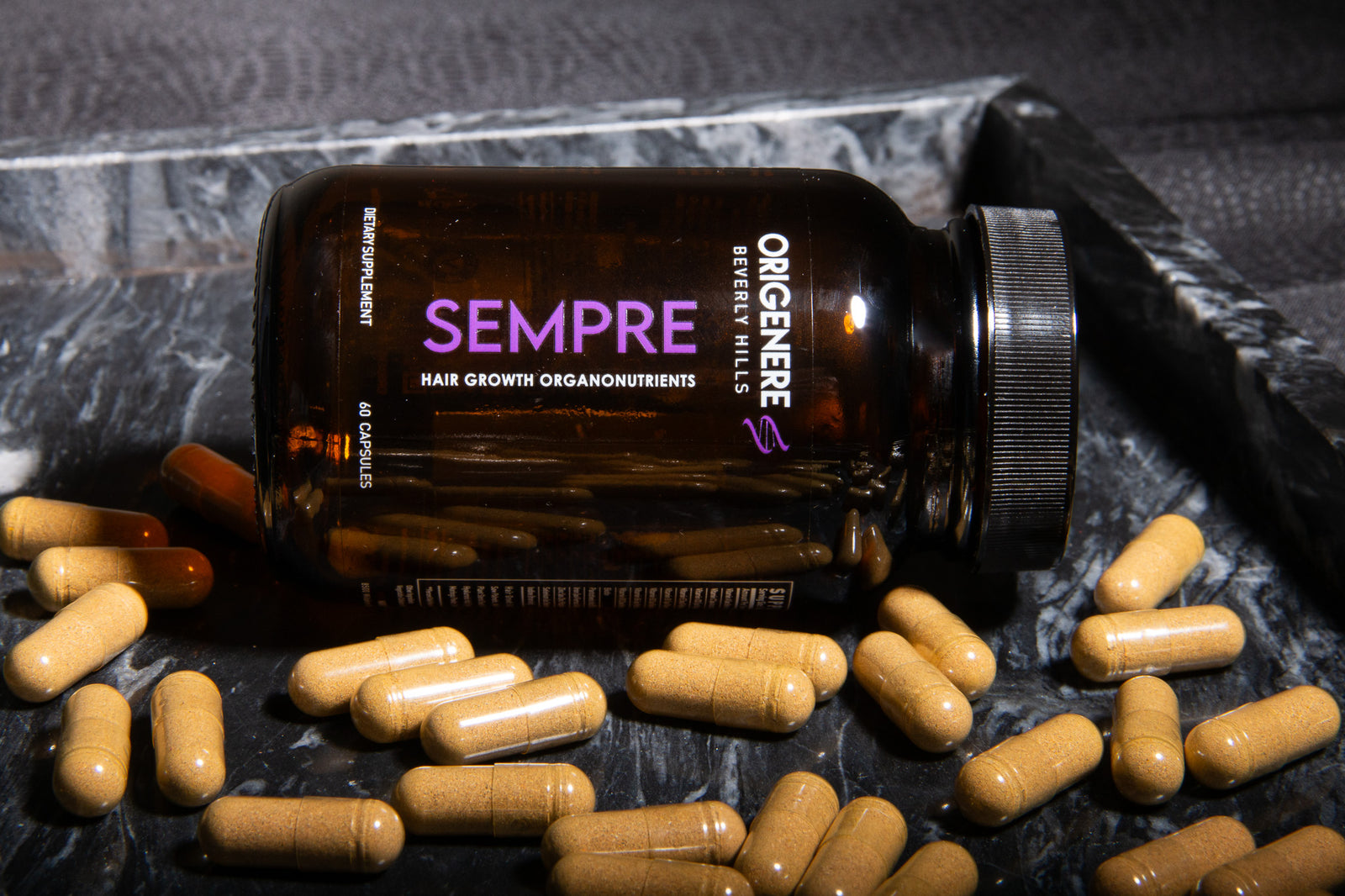Benefits of Coltsfoot For Hair

Harness Natural Beauty: Benefits of Coltsfoot for Hair
Introduction:
Tussilago farfara, commonly known as coltsfoot, is a perennial plant indigenous to temperate regions of Eurasia, North Africa, and Nepal. It is uniquely classified in the Asteraceae family, which also includes familiar members like lettuce, chicory, and sunflower.
Historically valued for its medicinal virtues, coltsfoot has a rich tapestry of applications in traditional medicine, notably for respiratory ailments like the treatment of cough, laryngitis or sore throat.
Scientific/ Latin Name:
Genus: Tussilago Species: farfara
Historic Use of Coltsfoot:

-
Root of coltsfoot has medicinal values for debilitated coughs, whooping cough and certain types of asthma. I
-
In Norway, the dried and cut leaves of coltsfoot, as folk medicines, are used in teas for the relief of coughs and chest complaints.
-
In Europe, coltsfoot leaves are used to treat bronchial infections while in China the flower buds are preferred.
-
In Traditional Chinese medicine (TCMs), the flower bud of T. farfara (TF) are used as a detoxifying agent.
-
Also used as a dietary supplement and health tea in many countries.
Modern Day Benefits of Coltsfoot: A Review of the Literature

Anti-Inflammatory
In experimental models of inflammatory bowel disease (IBD), Tussilagone (TSL), a major phytonutrient in T. farfara, ameliorated IBD symptoms by preventing GI tract inflammation.
This occured by decreasing the activity of powerful inflammatory cytokines including TNF-a ; IL-6; and decreasing NF-kB and increasing Nrf2 both transcription factors that in turn will lead to decrease inflammatory environment/ Two major phytochemicals of Tussilargo farfara (TF); TSL and TGN, have multiple scientific studies demonstrating strong anti-inflammatory mechanisms in treating skin problems with inflammatory processes such as psoriasis (Cheon et al., 2018).
Anti-Oxidative
Potent anti-oxidative activity demonstrated for various extracts of T. fafara both with in vitro cellular and chemical methods. Phenolic acids, quercetin glycosides and polysaccharides are the major antioxidant compounds in T. farfara (Kim et al., 2006; Qin et al., 2014).
Neuroprotective
TF flower bud extracts inhibited the neuronal cell damage induced by arachidonic, nitrogen oxide (NO) and oxidative stress in primary rat cortical cell culture assays (Cho et al, 2005).
In another study TF extract demonstrated a neuroprotective effect in ischemic stroke by decreasing the degree of brain infarction, and the inhibition of neuronal death as well as microglial activation-mediated inflammatory responses (Hwang et al, 2018).
Anti-Cancer
TSL and various extracts of TF shows anti-cancer activity both in vitro (in cells) and in-vivo animal models of cancer via a wide range of mechanisms including anti-proliferative effects; increases apoptosis (programmed cell death) via inducing TNF-related apoptosis inducing ligand (TRAIL); antiproliferative by inhibiting VEGF induced angiogenesis in cancer cells (Lee et al., 2014; Li et al., 2019).
Anti-Microbial/ Anti-Viral
TF extracts from various plant parts such as coltsfoot flower buds and leaves demonstrated anti-bacterial activity against 47 x bacterial species both positive (G+) to G- bacterial strains.
It is noteworthy that extracts derived from flower buds (as used in Sempre Foam) showed the more potent anti-bacterial effect. Furthermore, anti-bacterial activity was also demonstrated against the TB causing bacteria, mycobacterium tuberculosis( Zhao et al, 2014).
Various extracts of TF demonstrated anti-fungal activity.
Anti-Viral
Enterovirus 71 (EV71) infection can cause airway symptoms, brainstem encephalitis, neurogenic shock, and neurogenic pulmonary edema with high morbidity and mortality. In an in-vitro study by Chiang et al, 2017, it was demonstrated that a simple water extract of TF flower bud inhibited the both the viral replication and infection of cells.
Cytoprotective Activity
There is experimental evidence showing of the cytoprotective activities extracts of T. farfara.
In animal studies with mouse fibroblast NIH3T3 cells and human keratinocyte HaCaT cells showed impressive protection against glucose oxidase-induced oxidative stress that was significantly stronger compared to ẟ-Tocopherol (positive control) (Kang et al.,2016)
Anti-diabetic:
Inhibition of acyl CoA:diacylglycerol acyltransferase (DGAT), which is a key enzyme in triglyceride synthesis, is a drug target for treating obesity, type II diabetes mellitus, and metabolic syndrome. Tussilagone (TSL), major phytochemical of T. farfara, inhibited this key enzyme in animal and in human HepG2 cells, validating its ani-diabetic, anti-obesity properties (Park et al, 2008).
Alpha-Glucosidase, the enzyme that breaks down starch to glucose in the small intestine before it can be absorbed increasing the blood glucose levels, hence inhibitors of alpha-Glucosidase will reduce the postprandial blood glucose levels therefore, its possible use as an anti-diabetic. Many phytochemicals of coltsfoot, have demonstrated experimentally to be alpha-glucosidase inhibitors hence anti-diabetic (Gao et al., 2008)
Potential Therapeutic For Cough, Wheezing and Asthma
Contains substance name mucilage which coats the throat and soothes the respiratory tract making it potentially effective in the treatment of bronchitis. When Coltsfoot first came to the Americas it became popular to soak a blanket in a solution of coltsfoot and then wrap it around patients with whooping cough.
Interesting Facts:
Technology
There are over 16 patents involving TF (Tussilago farfara):
-Prevention and treatment of cancer (3 x patents)
-Antiulcer
-Analgesic
-TCMs (Traditional Chinese Medicine) of reparatory issues such as asthma, phlegm issues
- Antitussive formula
-Food supplements
- coltsfoot teas
-Invigorative Wines for kidney and lungs
-Cosmetic paste or a food and drink inhibit phototoxicity
Name Meaning
The name Filius ante patrem is an older designation of coltsfoot. Directly translated it means "The son before the father." It is in regard to appearance and disappearance of the star-like golden flower prior to development of its green leavevs.
Phytonutrient profile:

Approximately 150 compounds have been identified,
1. Sesquiterpenoids, include 53 compounds include major phytochemicals of coltsfoot: Tusilagonone (TGN) and Tusilagone (TSL)
2. Triterpenoids: 5 compounds identified.
3. Flavonoids: 13 x members identified. Including well known antioxidants Quercetins; Rustin; Kaempferols and their derivatives all powerful antioxidants.
4. Phenolic acids: 25 x members include benzoic acid, syringic acid and gallic acid. This group also shown to contain potent antioxidants.
5. Chromones; 24 x members; various pharmacological activities attributed to these compounds.
6. Alkaloids: Include pyrrolizidine alkaloids an; Tussilagine and Tussilaginine and their derivatives.
Other Phytochemicals
Essential oil highest in the flower buds; high concentration of cryptochlorogenic acid reported (phenolic compound).
Sterols; amino acids; organic acids and polysaccharides
But phytochemicals both in concentration and number vary depending on the geographical location.
Significant levels of trace elements; Zn, Se and Magnesium (macro mineral) found. Thought to contribute anti-oxidative and anti-inflammatory activities (Ruvipati et al, 2012).
Benefits of Coltsfoot for Hair and Scalp
Coltsfoot emerges as a compelling natural remedy for hair and scalp health, driven by its rich composition and antioxidative capacity:
-
Potent Antioxidants: The plant boasts a robust profile of antioxidants—such as phenolic acids and flavonoids like quercetin—which are crucial for protecting hair and scalp cells from oxidative stress. This protection fosters a healthier scalp environment conducive to hair growth.
-
Anti-inflammatory Action: The significant anti-inflammatory properties help soothe scalp conditions, reducing irritation and inflammation that can impair hair follicles and scalp health.
-
Nourishing Compounds: Tussilago farfara is rich in trace minerals, including zinc and selenium, and magnesium—a macro mineral vital for cellular functions. Zinc and selenium are well-known for their role in maintaining a healthy scalp and preventing hair loss.
-
Nutrient-Rich Extracts: The coltsfoot extract, especially of the flower buds, contain essential oils and bioactive compounds that have demonstrated significant activity in regard to the immune system. Antimicrobial and antiviral activities, help to protect the scalp from infections that could lead to dandruff and other scalp disorders.
Safety Profile:
Widely used as a vegetable but high internal consumption may have certain compounds maybe have side effects as any herbal or drugs. Always consult with health-care provider before use. Not appropriate for children and those who are pregnant or breast feeding.
Are There Any Potential Side Effects of Using Coltsfoot on Hair?
Using coltsfoot on hair may cause contact dermatitis in some individuals, leading to skin irritation or allergic reactions. It's recommended to perform a patch test before full application. Overuse of coltsfoot can also make hair brittle, so moderation is advised for optimal benefits without adverse effects.
Precautions
-
Do not take if Pregnant or Lactating
-
Consult with health care provider if using anti-coagulant or anti-platelet
-
Caution should be used in the setting of liver disease
-
Do not give to kids or infants
Conclusion:
Coltsfoot (Tussilago farfara) stands out as a remarkable herb with a wide array of health-promoting properties. Its potent antioxidant, anti-inflammatory, antimicrobial, antiviral, and cytoprotective activities contribute significantly to both hair follicular and scalp health. The presence of high levels of trace elements such as zinc and selenium, along with the essential macro-mineral magnesium, underpins its reputation as a plant of notable promise for enhancing not just internal health, but external beauty as well.
Interested in reading about the benefits of other plants in hair, visit Botanical Brilliance.
Reference:
https://doi.org/10.1016/j.jep.2020.113478
https://www.sciencedirect.com/science/article/abs/pii/S000927971830351X
https://www.sciencedirect.com/science/article/abs/pii/S0278691506000330
https://asianpubs.org/index.php/ajchem/article/view/26_11_59https://www.jstage.jst.go.jp/article/bpb/28/3/28_3_455/_article
https://www.worldscientific.com/doi/abs/10.1142/S0192415X17500197
https://link.springer.com/article/10.1007/s11655-018-2936-4
https://www.spandidos-publications.com/10.3892/or.2014.3279
https://www.sciencedirect.com/science/article/abs/pii/S0378874114004826
https://link.springer.com/article/10.1007/s12272-016-0730-z
https://www.sciencedirect.com/science/article/abs/pii/S0308814607007649
https://bmccomplementmedtherapies.biomedcentral.com/articles/10.1186/1472-6882-12-173






Leave a comment